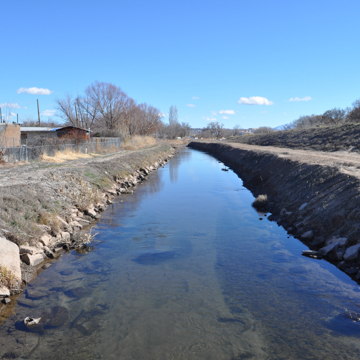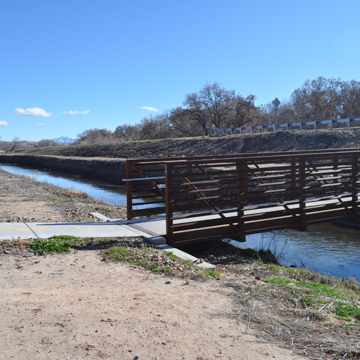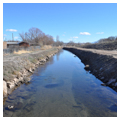The Acequia Madre de los Barelas, the “mother” or main irrigation ditch of Barelas, is an example of the agricultural technology that was commonly used in both Spanish and Mexican settlements in New Mexico. Built by Antonio Sandoval around 1830, this acequia diverted water from the Rio Grande, spurring the growth of Barelas as a farming community in the nineteenth century. Measuring between two and five yards across and from three to six feet deep, it flowed north to south through Los Ranchos, Griegos, Martineztown, and Barelas. By 1860, it was providing water to over 300 of the long-lot, narrow fields that sloped west from the ditch and followed the typical pattern of land division in colonial New Mexico.
When the railroad arrived in 1880, it cut across the agricultural fields of Barelas and changed its economy by providing employment in the locomotive repair shops along First Street. The Acequia Madre gradually became obsolete. Sections were contained by masonry canals or enclosed in tunnels, and much of the ditch had been filled in by the mid-twentieth century to make the land available for new development. Original stretches of the Acequia remain along Tingley Drive Southwest, where they have been integrated into the community with the construction of pedestrian bridges.
References
Sánchez, Joseph P., and Larry D. Miller. Martineztown 1823-1950: Hispanics, Italians, Jesuits & Land Investors in New Town Albuquerque. Los Ranchos de Albuquerque, NM: Rio Grande Books, 2009.
Wilson, Chris, “Barelas-South Fourth Street Historic District,” Bernalillo County, New Mexico. National Register of Historic Places Inventory–Nomination Form, 1996. National Park Service, U.S. Department of the Interior, Washington, D.C.











